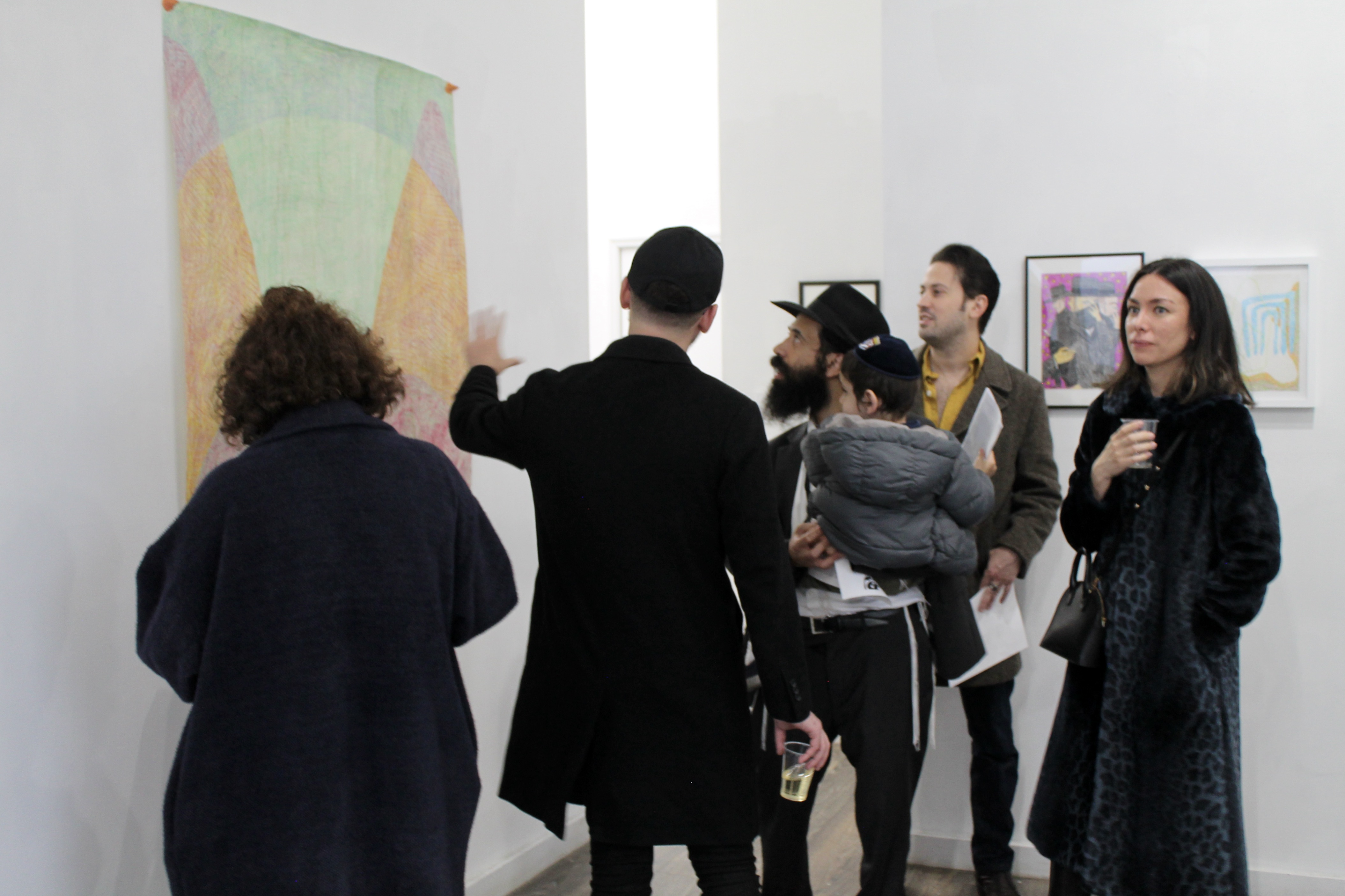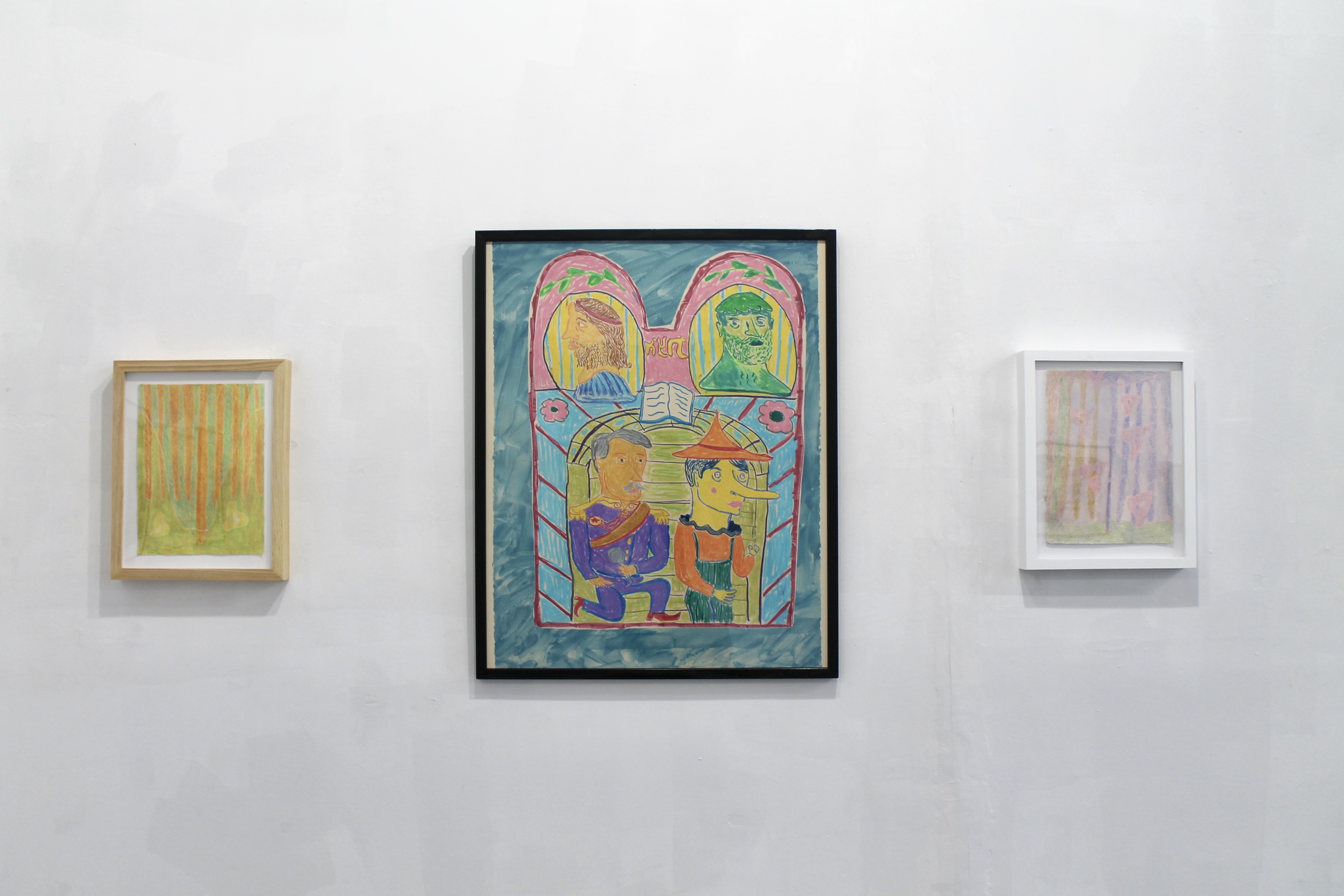







ACHRONIM
Henry Rosenberg
Orli Swergold
April 30 - May 3, 2023
Fuchs Projects
Brooklyn, NY
Guest curated for Havurah
The question of how Judaism survives is posed frequently and with both pride and skepticism. The idea that Jews continue to follow in the path of the Torah seems both miraculous, perhaps proof itself of the covenant with G-d, and preposterous, given the profound advancements in societies in which Jews live. From the perspective of Chassidus, each generation has to do their part [Hishtadlut הִשְׁתַּדְּלוּת] to help realize G-d’s will, and indeed, our faith has been profoundly shaped by a chain of scholars who made Judaism real and tangible in every age. Organized into seven eras, these movements laid successive foundations for Jewish faith to prosper against unlikely odds.
The Achronim אַחֲרוֹןים or the “last ones,” is the generation of scholars following the Rishonim רִאשׁוֹןים or the “early ones.” These eras marked the end of Babylonia as the seat of Torah scholarship and the dispersion of rabbinic authority over vast geographies. Distinct customs emerged as Sephardim and Ashkenazim became increasingly localized. The teachings of the Achronim represent the flowering of Judaism amid this diffusion. Central to their success is the interlocking structure of Jewish scholarship. Words of Torah are interpreted, those interpretations are explained, explanations are reinterpreted, and so on and so forth, forming a kind of textual quilt that covers multiple temporalities.
The practices of Orli Swergold and Henry Rosenberg mimic this structure, using visual citations of Judaism to comment on the personal and contemporary. Both artists develop a symbolic alphabet in their work that allows for the continual reinvention of Jewish imagery. Ritual objects like the menorah, the Chanukiah, and the seder plate appear in close, almost clashing proximity to the human figure. In some compositions, serendipitous moments feel as though they are being witnessed from above, while others offer intimate access to personal imaginings.
Formally, the artists share a preference for playful colors—muted beiges, browns and blacks punctuated by royal blue, magenta and kelly green. Loose hatching and scribbling create coarse texture that flaunts the physicality of pencil on paper.
For Swergold, the effect is warm, amorphous, and corporeal, a meditation on her experience of Jewish practice in the home. Hands with outstretched fingers suggest the ritual of lighting a shabbat candles, a women-centered mitzvah that Swergold, whose first name אוֹרְלִי means “my light,” finds particularly special. Stepping further inside her figurative universe, one finds menorah branches that double as ribs, hamantaschen that suggest cells or kisses, and stylized limbs that recall ritual immersion.
Meanwhile, Rosenberg’s scenes are decidedly more stark and masculine; his etching and prints meticulously composed. With a signature sense of action, Rosenberg depicts urban encounters with Judaism that verge on the absurd. Characters ranging from merchants in ghetto-era Venice to stoic Brooklyn Haredim seem to personify in equal measure the tension between sacred and profane. In Rosenberg’s work one finds material existence [Olam Asiyah עוֹלָם עֲשִׂיָּה] captured in all its chaos; a reminder that humor, distraction, and tragedy are creations of G-d.
Thanks to different vantage points and stylistic enquires, Swergold and Rosenberg’s practices can be read as a dialogue on the visual possibilities of Jewish thought. From one primary source comes an energetic conversation about how we relate to our heritage and to each other. We hope the tradition continues.
--
Henry Rosenberg (b. 1997) is an American artist and current first year MFA candidate at Tyler School of Art in Printmaking. Rosenberg’s studio practice combines personal and public memories, using manufactured fragments of stories to respond to and make observations about current events. Informed by his background in Art History and Visual Culture, Rosenberg points out the paradoxes and absurdities of the present with culture and history in mind. Many of his narratives are derived from Jewish familial folklore and connect interstitial spaces of history, politics, and popular culture. He exhibited the series “Extra Time,” an imagined alternative history to the 2004 Roma Derby, at Temple University Rome in 2023. Rosenberg hopes viewers will see his work as he sees the world, as a lively place filled with different viewpoints that expand and amplify our imagination.
Orli Swergold (b. 1995) is an artist from Westchester, N.Y. Swergold earned her Bachelor’s in Studio Art and Art History with high honors from Brandeis University in 2018 and her MFA in painting from the Rhode Island School of Design in 2021. At the core of Swergold’s practice lies a fascination with the body. Her work explores states of intimacy and alienation through objects that bridge the gap between human embodiment and the celestial sphere. At RISD, Swergold exhibited in three juried exhibitions and received the competitive Graduate Commons Grant. Her work is on permanent display in the Brandeis University Library Art Collection, and she has shown in exhibitions with Asya Geisberg Gallery, 81 Leonard Gallery, The Warner Gallery, Room 68 Wellfleet, Tsinghua University, and the Tyler School of Art.